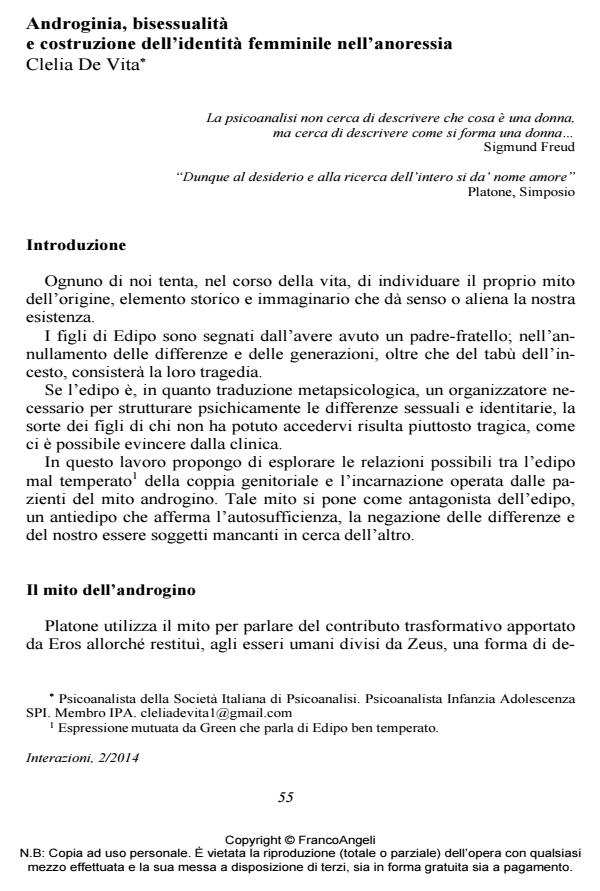Androgyny, bisexuality and construction of female anorexia identity
Journal title INTERAZIONI
Author/s Clelia De Vita
Publishing Year 2015 Issue 2014/2
Language Italian Pages 12 P. 55-66 File size 52 KB
DOI 10.3280/INT2014-002006
DOI is like a bar code for intellectual property: to have more infomation
click here
Below, you can see the article first page
If you want to buy this article in PDF format, you can do it, following the instructions to buy download credits

FrancoAngeli is member of Publishers International Linking Association, Inc (PILA), a not-for-profit association which run the CrossRef service enabling links to and from online scholarly content.
In this work, the author proposes a reading of the obstacles encountered by mental anorexic patients in the construction of female identity. In the first part, the problems of identity and relationship sex pressed by parents are highlighted, while in the second, clinical vignettes indicate moments of passage of the analytic work with patients struggling with the restructuring of their psychosexual identity. The myth of the androgyne is evoke das a metaphor of sexuality, expressed in fantasies and dreams of patients. The author emphasizes the role of the psychic bisexuality as a point of building a more solidpsychosexualfemale identity.
Keywords: Identity, anorexia, couple, androgyny, bisexuality.
Clelia De Vita, Androginia, bisessualità e costruzione dell’identità femminile nell’anoressia in "INTERAZIONI" 2/2014, pp 55-66, DOI: 10.3280/INT2014-002006